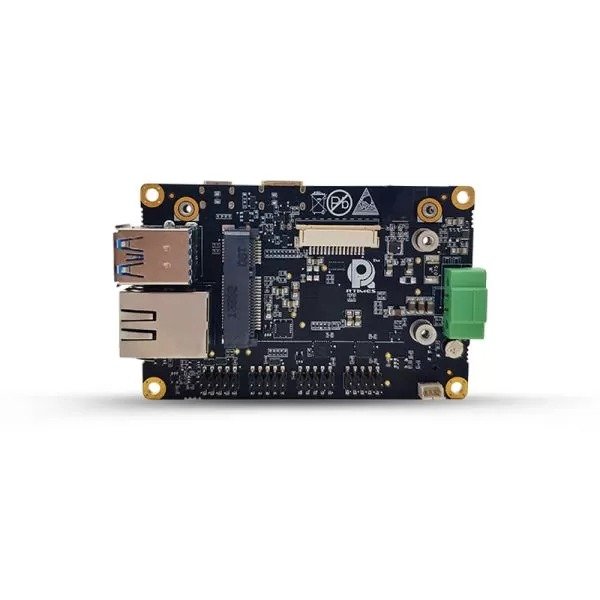electronics

May 26,2025 • 5 min read
Common Mistakes to Avoid When Working with Development Boards

Have you ever tried baking a cake and forgot the baking powder? The whole thing turns out flat, right? Well, working with a microcontroller development board is kind of like that. One small mistake can leave your entire project “flat” or completely unresponsive. Whether you're just stepping into the world of electronics or have dabbled in DIY projects before, there are a few common traps that many of us fall into when dealing with development boards. But don't worry—we’ve got your back!
In this article, we’ll walk through these missteps, help you avoid them, and guide you toward a smoother development journey.
Understanding Development Boards
Before diving into what not to do, it helps to understand what a microcontroller development board is. Simply put, it’s a ready-to-use circuit board that includes a microcontroller (like Arduino or STM32) along with the essentials—power supply, input/output pins, programming interface, and often some built-in sensors or LEDs.
Think of it as the brain of your project, mounted on a body that’s already wired to walk and talk. You just have to teach it how.
Skipping the Datasheet
“I’ll figure it out as I go.” Famous last words.
Many beginners skip reading the datasheet, assuming it's just technical mumbo-jumbo. But this document contains vital details like pin descriptions, power limits, and special functions. Skipping it is like driving in a new city without GPS—you’ll probably get lost.
Tip: Spend 15 minutes with the datasheet. It might save you hours of troubleshooting.
Using the Wrong Power Supply
Powering your board with the wrong voltage or current can be a fatal mistake. Too little, and the board won’t run. Too much, and you could fry the entire system.
Always check the recommended voltage range (usually 3.3V or 5V) and ensure your power source matches.
Poor Soldering Practices
If your board looks like a pigeon walked across it with solder on its feet—start over.
Cold joints, bridges, and bad angles can cause short circuits or unreliable connections. Even if your code is perfect, bad soldering will bring everything to a halt.
Invest in a good soldering iron and practice first.
Neglecting Pin Configurations
Every pin has a purpose—some are digital, some analog, some support communication protocols. Plugging in blindly can damage the board or connected devices.
Label your pins and double-check before plugging in sensors or modules.
Overloading the I/O Pins
Microcontrollers have limits on how much current they can source or sink through their I/O pins. Drawing too much can permanently damage them.
Use transistors or external drivers if you need to power high-current components like motors or high-brightness LEDs.
Ignoring Grounding and Noise Issues
Ever heard weird buzzing or blinking that makes no sense? That’s often due to improper grounding or electrical noise.
Always connect all components to a common ground and keep wires short to reduce interference.
Not Updating Firmware or Libraries
Outdated software can lead to incompatibilities or bugs that were already fixed in newer versions.
Regularly check for updates to the board’s firmware, drivers, and libraries. Many platforms like Arduino and PlatformIO make this easy.
Skipping Code Comments and Documentation
In the rush of excitement, you may write lines of code and assume you'll remember what they do later. Spoiler: You won’t.
Comment your code. Even a single line like // controls motor speed makes future edits a breeze.
Assuming All Boards Are the Same
Just because two boards look alike doesn’t mean they work the same. Pinout, voltage levels, memory, and clock speed can vary.
Read the specs before swapping one board for another. Always treat each microcontroller development board as its own unique beast.
Lack of Proper Testing
Don’t wait till your entire project is assembled to test it. It’s like building a house and checking the plumbing after you’ve laid down the carpet.
Test each component as you go—sensors, outputs, inputs. Break your project into small steps.
Improper Static Handling
Yes, static electricity can destroy sensitive electronics. You might not see or feel it, but your board sure will.
Always touch a grounded object before handling your board. Consider using an anti-static wrist strap for added safety.
Rushing Without Planning
Jumping into a project without a clear plan can lead to dead ends and rewiring disasters.
Sketch your circuit, plan your code, and list required components before starting. A little preparation goes a long way.
Conclusion & Final Thoughts
Working with a microcontroller development board can be a thrilling experience. It’s like giving life to your ideas—watching them blink, beep, or move as you command. But, like any journey, there are pitfalls. The key is to recognize these common mistakes and learn from them. Remember, even seasoned pros slip up. The trick is to catch your errors early, keep learning, and enjoy the process.
Tanna TechBiz LLP Details
User Profile
- Full name
- Tanna TechBiz LLP
- Email address
- seotannatechbiz@gmail.com
- Join Date
- 2025-05-22
- State
- Gujarat
- City
- Rajkot
- Pincode
- 360001
- Address
- VrajBhoomi, 22, New Jagnath Plot, Near Dr. Dastoor's Hospital, Dr. Yagnik Road, Rajkot, Gujarat, India
- Follow us on Facebook
- Tannatechbiz
- Follow us on Twitter
- Website Name
- https://tannatechbiz.com/
- Bio
- Tanna TechBiz LLP: Trusted distributor of top open-source hardware brands, empowering innovators with cutting-edge tech.